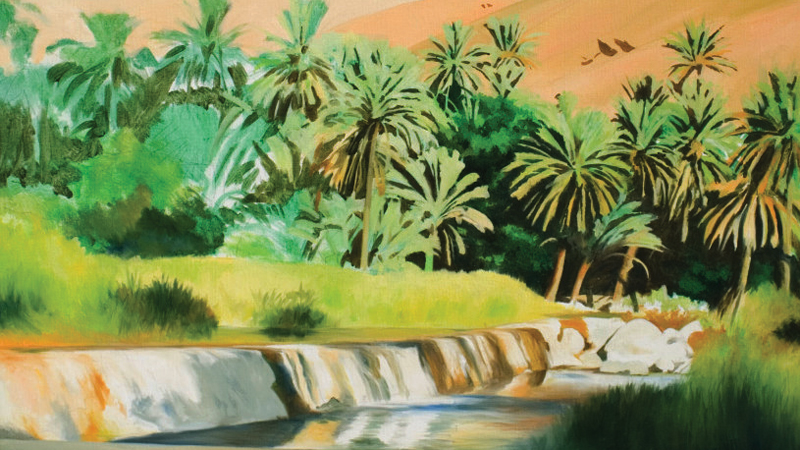

The refrain of rain and sunshine adds a layer of ecstatic mysticism to existential consciousness. They seem to be two totally independent phenomena, though in essence they aren’t. But rain and water drops touch our being and influence our mood more powerfully than sunshine does. It may be noted that water — eulogized as ‘life’s elixir’ — or its absence, to be precise, could be responsible for impending world wars, and is already the cause of nearly 850,000 deaths annually. The sun, meanwhile, remains non-controversial.
Even as the aesthetics of water is linked to primitive sensuality, our pursuit of water has been more or less linked to plain survival. In a way, H2O is nothing but life affirmation.
Obviously, for the Sultanate, located in an arid region with limited and irregular rainfall, water is deeply meaningful and enriching. A land where mean annual rainfall in the coastal plains and desert areas never exceeds 40mm, every downpour is pure celebration. Even in its mountain regions where average annual rainfall touches 350mm, generously recharging the country’s aquifers.
Oman has three major water sources: Surface water, intercepted by ghaily aflaj (channels), and groundwater that is available via daudi and ainy aflaj and wells. While over extraction has led to extreme water scarcity in some areas, other areas are affected by saline intrusion, that damage aquifers, especially in the coastal areas. Seawater desalination and wastewater treatment address as much as 13 per cent of the Sultanate’s water demands. Conventional water resources cover the rest.
Water resources in the Sultanate are treated with utmost seriousness. Strong laws and regulations have been put in place towards safeguarding them against depletion and degradation.
However, providing safe drinking water to the remote communities across the Sultanate continues to be a humongous challenge. And the authorities have been working to ensure adequate supply without any glitches. Significantly, Diam — the Public Authority for Water — is looking at advanced technologies to meet the growing demand for pure water. Diam is impressed by the ‘Water from Air’ and ‘Solar Water’ technologies, which it thinks could go a long way in providing uninterrupted supply of drinking water to the people of the Sultanate.
Though both projects are based on clean energy and low-cost technologies, Water from Air is being planned to ensure sustainable water supply to the far-flung regions that lack power supply and where water demand is relatively low. This technology will be integrated with renewable energy sources with a view to producing sustainable amounts of clean drinking water sans the carbon impacts generated by conventional water production systems.
Solar Water Technology, on the other hand, exploits the power of sunlight to superheat, evaporate, condensate and precipitate seawater as fresh water in a carbon-neutral environment.
These clean technologies are expected to offer a reliable and sustainable alternative to energy-intensive seawater desalination systems in the Sultanate’s mission to satisfying the increasing water needs of people and industries.
Diam is presently encouraging the private sector to invest in small-scale desalination units on a Build-Own-Operate (BOO) model in areas that aren’t connected to the main grids.
Meanwhile, Oman’s water bodies continue to be the muse of Omani artists. Wadis and afjaj are a recurring theme in the works of Omani painters. Even artists from outside Oman are enraptured by the striking beauty of the flowing water in the Sultanate.
Mick Hanley, a painter and photographer from the UK who worked as an artist in the Sultanate, has captured the charm of Oman’s water like no other. His ‘Oman Wadi’ and ‘Oman Wadi with hawk and Purple Herons’, both oil on linen done in the early 90’s, and the ‘Wadi with bluff’ done in 2012, among others, marvellously portray the mystical dimensions of water as perceived by the Omani psyche.
Oman Observer is now on the WhatsApp channel. Click here



